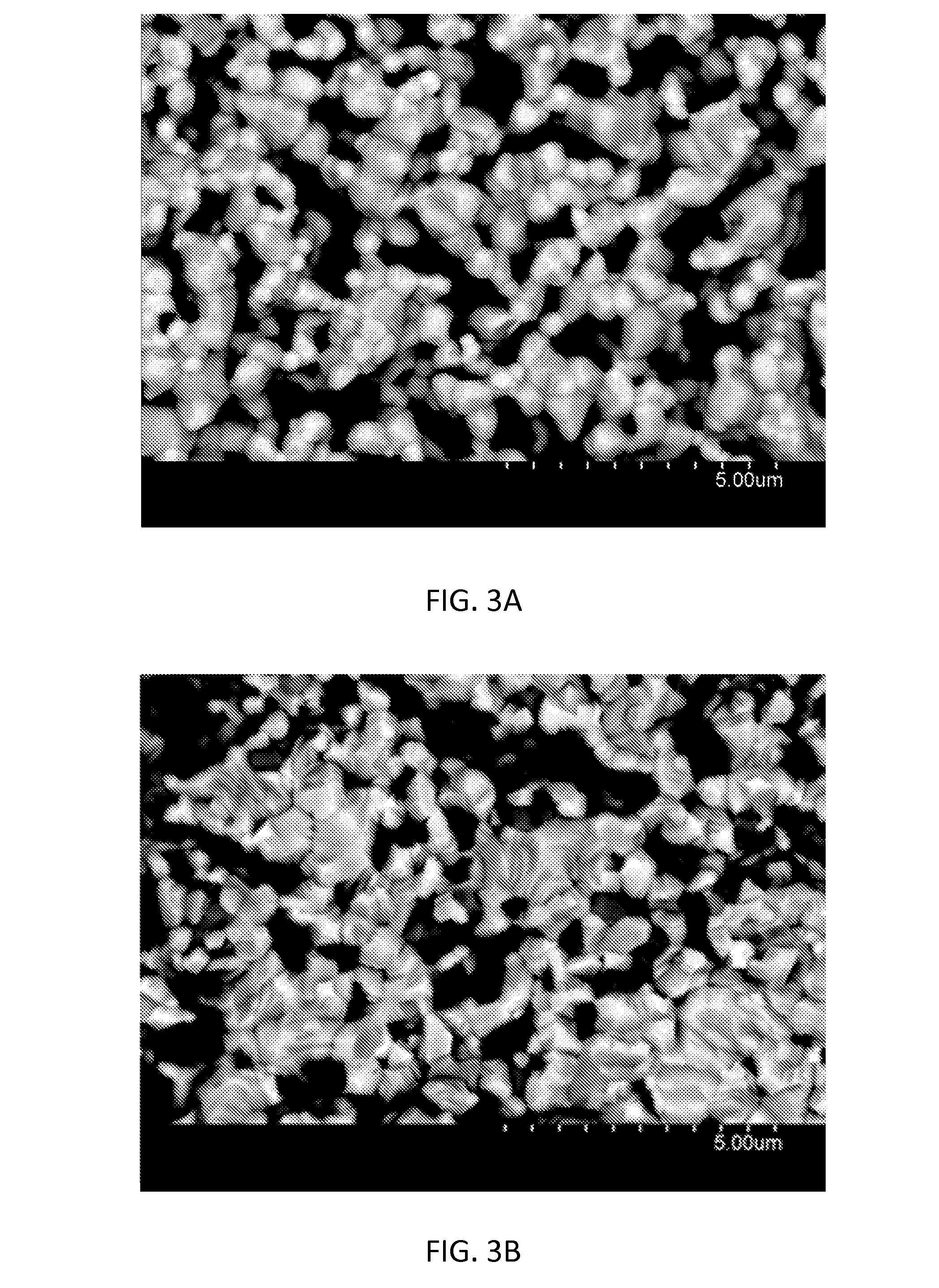Alkylene oxide synthesis
- Summary
- Abstract
- Description
- Claims
- Application Information
AI Technical Summary
Benefits of technology
Problems solved by technology
Method used
Image
Examples
example 1
Processing of Electrolyte-Supported Oxide Catalysts
[0077]A 20 μm thick 3YSZ (3 mol % yttria stabilized zirconia) electrolyte film (U.S. Pat. No. 5,089,455) is employed as oxygen ion conducting electrolyte to support oxide catalysts. The electrolyte sheet is cleaned in diluted HF solution and washed in deionized water prior to use.
[0078](La0.8Sr0.2)Mn1.03O4 (LSM), (La0.8Sr0.2)FeO4, x=0.2, 0.3, 0.4 (LSF-20, LSF-30, LSF-40) powders with about 100 nm particle size are mixed with a printing vehicle, screen-printed on the 3YSZ electrolyte and fired in air at temperatures between 1100° C. and 1250° C. for 1-4 h. The fired print thickness is 1-3 μm. Electrically conducting contacts are applied to the oxide layer by printing a Pt / YSZ or Ag / YSZ comb-shaped pattern on top of the oxide print and firing it to 1200° C. for Pt and 850-950° C. for Ag, respectively, or by simply connecting electric conducting wire to the border of the catalyst area. A large fraction of the oxide catalyst surface is ...
example 2
Catalyst Stability During Operation
[0081]Within normal catalyst operation (e.g., avoiding excessive applied cell voltage of 2.5V or more, excessive temperatures of 700° C. or more and exposure of the catalyst to hydrocarbon without oxygen or to pO2−20 bar), the oxide catalysts are stable. They are not degraded by exposure to hydrocarbon / oxygen mixtures or by exposure to the reaction side products, water and CO2. FIGS. 4A-D show the phase and microstructure of operated oxide catalyst. FIG. 4A shows XRD of electrolyte-supported perovskite catalyst after processing and after longtime operation in propene / oxygen at 550° C.; only a single perovskite phase is visible in the (La0.8Sr0.2)FeO3 catalyst layer (together with peaks from the underlaying zirconia substrate). Circles=(La0.8, Sr0.2)FeO3 perovskite; triangles=tetragonal zirconia 3YSZ substrate. FIG. 4B shows SEM of polished cell cross sections of processed and operated cells; no microstructural modification of the catalyst or the ca...
example 3
Testing Procedure Used for Evaluating Electrolyte-Supported Oxide Catalysts
[0082]For testing the YSZ-supported oxide catalyst in a small electrochemical reactor, oxide catalyst samples with 1-2 cm2 macroscopic surface area are used. As counter electrode either the same oxide catalyst or a perovskite / YSZ layer with a partially or fully covering conductive Pt / YSZ or Ag / YSZ print is used. The samples were mounted via Ag-net and wire onto an alumina sample holder that was equipped with a thermocouple close to the oxide layer. The oxide catalyst layers are connected to a power source. To allow application of a cell voltage and simultaneous electrochemical measurements, the cells are mounted in a symmetric two-electrode, four-wire set up. A Solartron 1260 Frequency Response Analyzer with 1287 Electrochemical Interface is used to apply the cell potential, measure i-U characteristics and impedance in a range from 0.01 Hz to 300,000 Hz.
[0083]The sample holder is introduced into a ceramic rea...
PUM
| Property | Measurement | Unit |
|---|---|---|
| Temperature | aaaaa | aaaaa |
| Temperature | aaaaa | aaaaa |
| Temperature | aaaaa | aaaaa |
Abstract
Description
Claims
Application Information
 Login to View More
Login to View More - R&D Engineer
- R&D Manager
- IP Professional
- Industry Leading Data Capabilities
- Powerful AI technology
- Patent DNA Extraction
Browse by: Latest US Patents, China's latest patents, Technical Efficacy Thesaurus, Application Domain, Technology Topic, Popular Technical Reports.
© 2024 PatSnap. All rights reserved.Legal|Privacy policy|Modern Slavery Act Transparency Statement|Sitemap|About US| Contact US: help@patsnap.com










